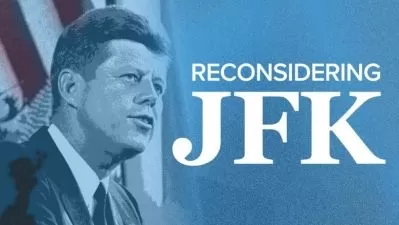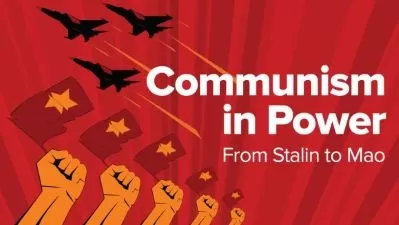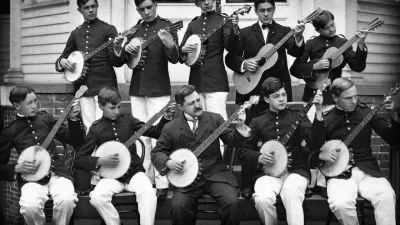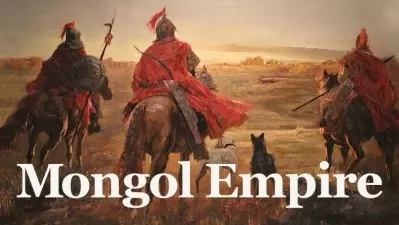America's Long Struggle against Slavery
Richard Bell
13:12:12
Description
What do you really know about the fight against slavery in America? We’re all familiar with the Underground Railroad and the Emancipation Proclamation, but the fight to end slavery was not some sudden movement that sprang up in the middle of the 19th century. Resistance from the enslaved started on the western coast of Africa in the 15th century and continued as the institution of slavery was codified in America, culminating with the War between the States.
Many historical views of American slavery only look at small parts of this enormous struggle, focusing on single events or a small segment of famous figures. But to understand America—to fully understand our country today—one must examine the whole history of struggle, oppression, and resistance, not only by famous figures like Abraham Lincoln and Harriet Tubman, but also by an enormous and often unfamiliar cast of characters, including:
- The “saltwater slaves” who revolted aboard slave ships and chose suicide over an unknown future;
- Phibbah Thistlewood, a woman who made the best of her situation to bridge the gap between her master and her fellow slaves;
- David Walker, Nat Turner, and other figures calling for immediate, urgent action; and
- Northern Quakers, pamphleteers, preachers, and school teachers who changed the political tide.
What these disparate figures had in common was their belief in the injustice and immorality of slavery, which allowed them to slowly coalesce into a movement. Individuals gradually organized, and then the abolitionist movement led to war which led, in theory, to freedom. America’s Long Struggle against Slavery is your opportunity to survey the history of the American anti-slavery movement, from the dawn of the transatlantic slave trade during the late 15th century to the end of Reconstruction in 1877 and beyond. Taught by Professor Richard Bell of the University of Maryland, these 30 eye-opening lectures give you an up-close view of a venal institution and the people who fought against it—and who often paid for their courage with their lives.
This course is a must for scholars and history buffs alike. As Professor Bell examines the different means and methods that Americans, white and black, have used to escape slavery, he presents the grand problems that animated everyone engaged in this great struggle. Should you fight slavery with violence? How do you convert moral outrage into political action? Whose responsibility is it to act? Although there are no easy answers, America’s Long Struggle against Slavery dares to ask these and other tough questions, providing numerous historical perspectives to allow you to form your own thoroughly informed answers.
Trace the Long Arc of Slavery in America
For many, the struggle against slavery is tied to the abolitionist movement of the 19th century: a coalition made up mostly of free blacks and northern whites railing against an unjust institution, a movement that reached its peak with the Civil War and the subsequent 13th Amendment to the U.S. Constitution.
But as you will find out at the start of this course, resistance to slavery was embedded in the institution from the beginning. You see it in the accounts of the great lengths to which European traders went to keep their slaves contained during the brutal Middle Passage. You see it in the account of revolts such as the one that occured near Stono, South Carolina, in 1739, when a band of armed slaves challenged slaveholders’ supremacy. And you see it in the pamphlets and essays of the American Quaker community as early as the 17th century.
In surveying these and other stories of resistance, Professor Bell offers both a broad and deep history of slavery in America. From the economics of British traders looking to cut into the profits of the Caribbean sugar industry, to the rise of tobacco and “King Cotton” in America, to the migration of slaves from Barbados and Jamaica to Virginia and Mississippi, this is a story of movement and continual change.
What becomes clear, over time, is that resistance to slavery started with individuals working alone, and gradually coalesced into a movement for abolition, which took many forms: the writings of William Lloyd Garrison and Frederick Douglass, the insurrections of Nat Turner and John Brown, and the achievements of Harriet Beecher Stowe and Harriet Tubman. This course offers the rare chance to step into their shoes to deepen your understanding of America.
Explore Uncomfortable Territory
America has long been a nation of uncomfortable truths. How did the founders square their advocacy of “liberty” with the fact of owning slaves? How do we as a nation reconcile “justice for all” with the legacy of Jim Crow? There are no simple explanations, but the more you dig into the history, the more complex it becomes.
Professor Bell provides a fair and unflinching evaluation of America’s legacy of slavery and the long struggle against it. The complexity begins in the 16th century, when the British merchant John Hawkins engaged in a type of piracy, stealing slaves from Africa and selling them in the Caribbean. One uncomfortable truth is the knowledge that Africans themselves engaged in the slave trade. As Professor Bell explains, one preemptive strategy to avoid being enslaved was to assume the role of the enslaver.
You’ll also meet Anthony Johnson, an 18th-century slave who bought his own freedom and promptly acquired slaves of his own. He ended up in a legal quarrel with a neighbor, which set the legal machinery in motion for an official acceptance of slavery in the United States. The law codified slavery a few decades later, after Bacon’s Rebellion, thus institutionalizing racial slavery. You’ll trace legal developments through the Civil War, including a deep dive into the mercurial character of Supreme Court Justice Roger Taney who, among other controversial opinions, decided the outcome of the Dred Scott case.
A Powerful, Life-Changing Story
The struggle for freedom was a long, complicated story. It began with the dawn of the transatlantic slave trade and included some of American history’s most well-known figures, but it also included black field workers and fugitives, preachers and vigilantes, as well as ordinary white soldiers and activists. The struggle includes the violence of insurrection and war, but also the fiery speeches of otherwise mild-mannered Quakers.
In the end, the conflagration of the Civil War and the passage of the 13th Amendment secured freedom for slaves, but Reconstruction and Jim Crow quashed any notion that the United States would be free and equal. This legacy continued through the civil rights movement and beyond. Professor Bell ends with a look at slavery in the world today—perhaps not the institutionalized system of southern plantations, but very real nonetheless.
On the whole, America’s Long Struggle against Slavery is an astonishing feat—a chilling historical narrative offering vital lessons for our world today.
More details
User Reviews
Rating
Richard Bell
Instructor's CoursesRichard Bell is an Associate Professor of History at the University of Maryland, College Park. He holds a BA from the University of Cambridge and a PhD from Harvard University. Dr. Bell has won more than a dozen teaching awards, including the Board of Regents’ Faculty Award for Excellence in Teaching, the highest honor for teaching faculty in the University System of Maryland. He has held major research fellowships at Yale University, the University of Cambridge, and the Library of Congress.
Dr. Bell serves as a trustee of the Maryland Historical Society, an elected member of the Massachusetts Historical Society, and a fellow of the Royal Historical Society. He is the author or coeditor of multiple journal articles and three books: We Shall Be No More: Suicide and Self-Government in the Newly United States; Buried Lives: Incarcerated in Early America; and Stolen: Five Free Boys Kidnapped into Slavery and Their Astonishing Odyssey Home, which received a National Endowment for the Humanities Public Scholar Award.

The Great Courses
View courses The Great Courses- language english
- Training sessions 31
- duration 13:12:12
- English subtitles has
- Release Date 2023/08/19





















